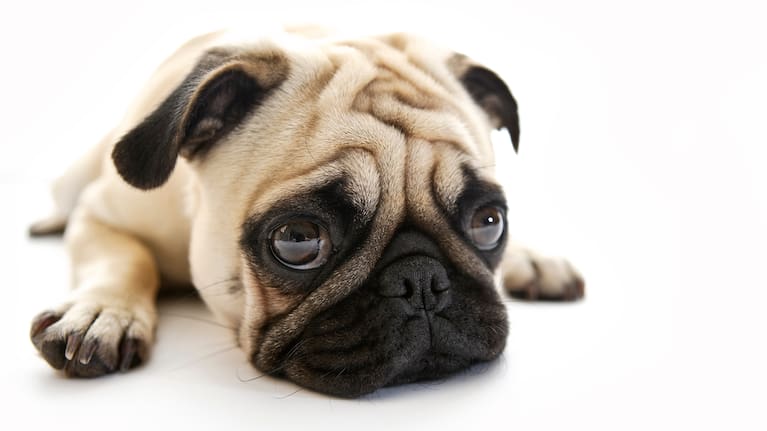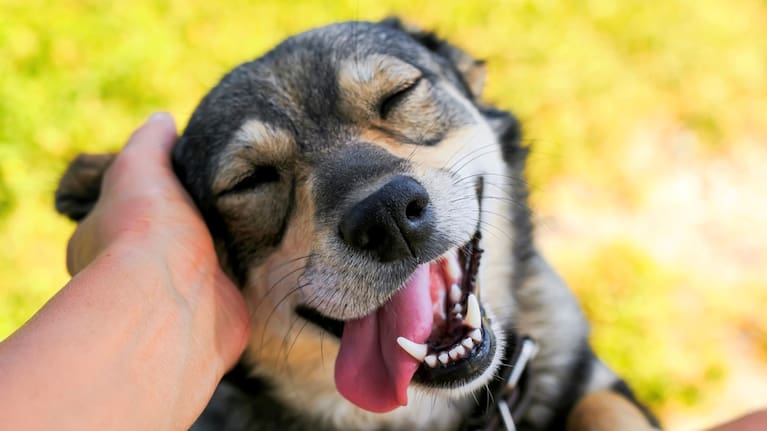[ad_1]
The human desire to seek novelty in their pets is harming their health, writes Jacqueline Boyd for The Conversation.
Dogs come in all shapes and sizes. We’ve moulded some of them to have large protruding eyes, sloping backs and shortened legs through selective breeding.
What is increasingly clear is that some of the extremes of physical shape, size and appearance seen in many dog breeds damage their health.
Despite this, many of these breeds, such as French bulldogs, continue to increase in popularity. In response, the Royal Veterinary College in the UK has issued guidance on 10 extreme body shapes prospective dog owners should avoid.
But dogs aren’t the only animals who have suffered the consequences of selective breeding.
Humans have selectively bred animals for centuries. For animals linked to agriculture, selection has resulted in high milk-yielding dairy cows, chickens that lay eggs far more frequently than their forest-dwelling ancestors ever would have, and sheep that grow wool to excess.
The reality for many animals is that intense genetic selection for specific characteristics, whether physical or behavioural can result in serious unintended consequences.
Dairy cows often suffer from crippling lameness. Laying hens have a limited egg output and their life span is substantially less than it otherwise naturally would be - both because selective breeding has reduced their lifespan and they are often slaughtered when their high egg output slows.
Designing dogs

For our dogs and other pets, including cats, rabbits, small rodents and even some reptiles, human wants and preferences also lead to selection for aesthetic appeal. This is typically linked to a desire for rare, novel and baby-like features.
Sadly, the human desire to seek novelty in another sentient being is harming their health and their natural abilities, welfare and longevity.
This is rather ironic, especially for dogs who were traditionally bred for functional reasons. These include guarding, herding, hunting and protecting, as well as companionship.
Dogs, cats and even rabbits have been bred to have short muzzles (brachycephalic). This affects their dental health and ability to eat normally. Brachycephalic cats have a severe risk of health problems ranging from breathing issues to neurological disorders.
But the popularity of these animals is surging.
Although brachycephalic breeds are not a recent creation, (pugs were imported to Europe from China in the 16th century, and Persians are one of the oldest known cat breeds), modern versions are much more extreme.
For many flat-faced dogs, breathing problems prevent them from exercising. They also often struggle to sleep well because of difficulty breathing when relaxed.
Other physical characteristics such as shortened legs and long backs as seen in dachshunds can lead to spinal issues.
Giving birth can be dangerous for many dog breeds, such as those with wide shoulders. Nearly all English bulldogs need a caesarean section.
Redesigning

To raise awareness of the health problems many dogs experience as a result of their physique, dog welfare group the International Collaborative on Extreme Conformations in Dogs (ICECDogs) is encouraging dog lovers to choose companion dogs with more moderate, natural attributes.
ICECDogs wants people to prioritise health, welfare and temperament over appearance.
This does not necessarily mean banning certain breeds, although in Germany, a draft bill is seeking to develop legislation to prevent people from breeding dog in a way that results in “pain, suffering or damage”.
In Norway, the breeding of Cavalier King Charles spaniels has been banned. The breed suffers from several health problems including heart conditions and syringomyelia, where the brain effectively protrudes from the base of the skull – an extremely painful and debilitating condition.
Aficionados of many dog breeds are now devising strategies to address their welfare. These include genetic and other testing schemes to identify healthy dogs to include in breeding programmes to move towards a healthier population.
Awareness of genetic health conditions in other animals is growing, too.
Reptile and amphibian enthusiast group the International Herpetological Society has banned the sale of spider royal pythons in their shows. The genetic mutation that results in the snake’s beautiful markings is also linked to a nervous system disorder that makes their heads wobble.
Move towards moderate
If you’re thinking about adding a dog or cat to your family, choose one with a moderate appearance.
This means avoiding extreme characteristics such as short legs, unusual colours (many extremes are linked with neurological issues), flattened faces, excessively muscular bodies or long backs.
How animals are represented in the media is also important. The British Veterinary Association strongly recommends that animals represented in advertising, films and TV are free from exaggerated characteristics and should exemplify good health and wellbeing.
By changing public perception about the welfare realities of extreme physical features, we might start reducing the demand for pets bred for exaggerated appearance.
After all, supply will always meet demand.
Jacqueline Boyd is a lecturer in Animal Science at Nottingham Trent University.
This article is republished from The Conversation under a Creative Commons licence.
[ad_2]
